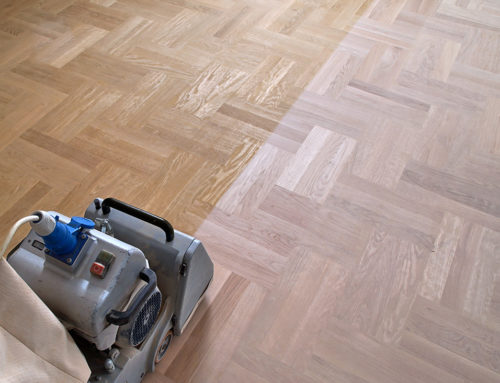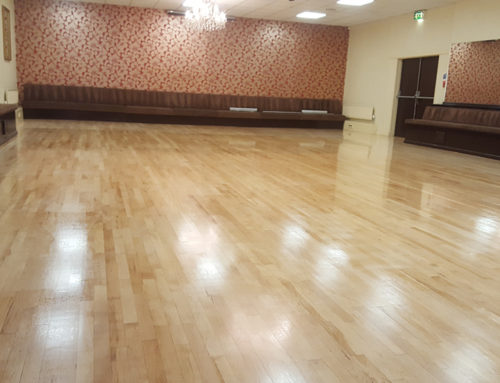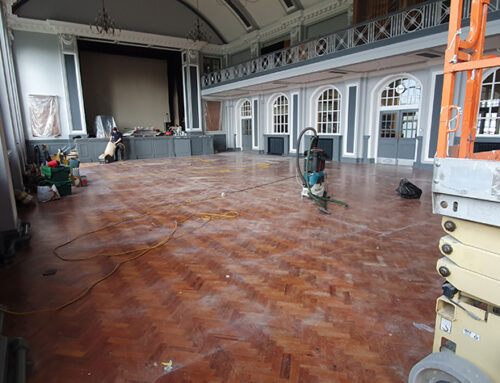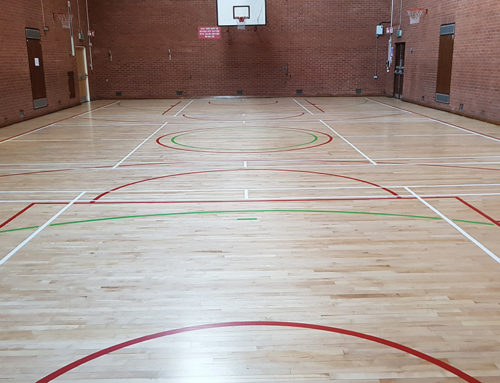Commercial floor sanding has undergone significant transformations over the years, evolving from rudimentary techniques to sophisticated machinery and eco-friendly practices. This evolution has not only improved the quality of the results but also made the process more efficient and less labour-intensive.
Commercial Floor Sanding: Early Techniques
In the early days, floor sanding was a laborious task performed manually. Craftsmen also used handheld tools such as scrapers and sandpaper to smoothen and level floor surfaces. This method was slow, required considerable physical effort, and often resulted in uneven finishes. The dust generated in the process posed health risks and made the work environment uncomfortable.
 Handheld Sanding Tools
Handheld Sanding Tools
The earliest sanding tools were simple and required significant skill to use effectively. These tools included metal scrapers, which were used to remove old finishes and smoothen surfaces, and various grades of sandpaper to achieve the desired finish. The process was time-consuming and demanded a high level of craftsmanship to ensure a uniform appearance.
Introduction of Sanding Machines
The invention of mechanical sanding machines in the mid-20th century marked a turning point in commercial floor sanding. These machines drastically reduced the time and also effort required to sand floors, allowing for more consistent and professional results.
Drum Sanders
Drum sanders were among the first mechanical sanding machines introduced. Equipped with a rotating drum covered in sandpaper, these machines could quickly strip away layers of old finish and also rough spots. Drum sanders therefore revolutionized the industry by providing a more uniform finish and reducing the physical strain on workers. However, they were still relatively bulky and required skilled operators to handle effectively.
 Orbital Sanders
Orbital Sanders
Orbital sanders followed drum sanders, offering a more advanced solution with their vibrating sanding pads. These machines provided finer finishes and were also easier to control, making them suitable for a wider range of floor types. Orbital sanders became popular for their ability to reach edges and corners more effectively than drum sanders.
Advancements in Technology
The late 20th and early 21st centuries also saw significant technological advancements in commercial floor sanding. Modern machines are equipped with features that enhance efficiency, precision, and also dust control.
Dust Collection Systems
One of the most notable improvements in floor sanding technology is the introduction of dust collection systems. Early sanding processes generated large amounts of dust, which posed health risks and required extensive cleanup. Modern sanding machines come with built-in vacuum systems that capture dust as it is produced, keeping the work environment cleaner and safer for operators.
Automated and Programmable Machines
Today’s sanding machines are often automated and programmable, allowing for precise control over the sanding process. Operators can set the machine to perform specific tasks, such as varying the pressure applied or changing sanding patterns. This automation leads to more consistent results and reduces the likelihood of human error.
 Eco-Friendly Practices
Eco-Friendly Practices
As awareness of environmental impact has grown, the commercial floor sanding industry has adapted by adopting more eco-friendly practices. These changes are reflected in both the materials used and the methods employed.
Low-VOC Finishes
Traditional floor finishes often contained high levels of volatile organic compounds (VOCs), which contribute to air pollution and health issues. Modern finishes are formulated to be low-VOC, providing a safer alternative that still delivers excellent durability and aesthetics.
Sustainable Sanding Procedures
Sustainable sanding procedures have been developed to minimize waste and reduce the environmental footprint of floor sanding projects. These methods include using reusable sanding pads, optimizing sanding paths to reduce energy consumption, and implementing recycling programs for used materials.
The evolution of commercial floor sanding has been marked by significant advancements in technology, efficiency, and sustainability. From the manual labour of early techniques to the automated precision of modern machinery, the industry has transformed to meet the demands of quality and environmental consciousness. As new innovations also continue to emerge, the future of commercial floor sanding promises even greater improvements, ensuring beautiful, durable floors with minimal impact on the environment. Looking for a local commercial floor sander? Call today on 07714 439813. You can also reach us via our contact form.






